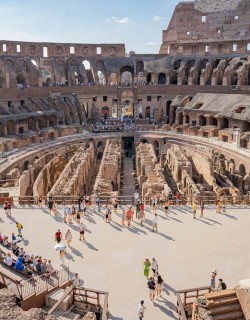During the period of Italian unification in the early 19th century, many areas of Rome were completely reconstructed or renovated. In 1927, demolition and reconstruction was set to begin in the ancient area of Campo Marzio, specifically the area of Torre Argentina, which was named after Argentoratum, a Roman military outpost located in modern-day Stasbourg.
During the demolition process, workers discovered two large arms and a head made from marble (which were eventually figured to be part of a statue of the Roman goddess of luck, Fortuna) and all work was stopped. Archaeologists were then given task of carefully excavating the area, eventually unearthing one of the most significant sites in all of Roman history.
What the archaeologists uncovered was a large square, or largo, containing the ruins of 4 Roman temples and the remains of Pompey’s Theatre. The temples were likely restored after the fire of 80 AD, however some date as far back as the 4th century BC. Pompey incorporated the location of the ancient temples during the construction of Pompey’s Theatre, declaring it the “Area Sacra” or “Sacred Area” and making it a large shrine to his personal deity.
The remains of Pompey’s Theatre are perhaps the most interesting discovery as it is believed to be the site of the assassination of Julius Caesar. The Curia of Pompey, a large meeting area within the Theatre, is believed to be the location of Caesar’s grim fate. Although the precise location of Caesar’s death is likely beneath Via di Torre Argentina, thus unreachable, in 2012 archaeologists did discover a large monument within the largo, about 10 feet wide and 6 feet high. This monument is thought to have been commissioned by Caesar’s adopted son, Augustus, as a memorial of his father’s death.
Today, Largo di Torre Argentina is also referred to as the “Cat Sanctuary” as it has become a shelter of sorts for stray cats in area. Visitors will often stop to photograph the felines wandering through the beautiful ruins, while perhaps unknowingly standing above the same area where one of the most significant assassinations in the history of humanity occurred.
~by Michele D’Elia~



